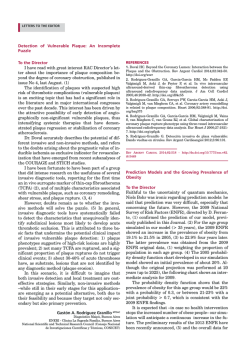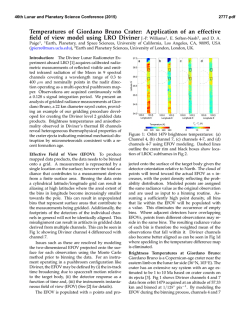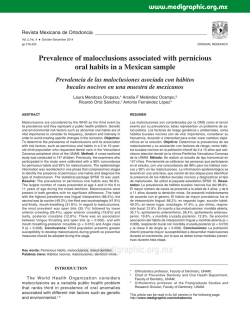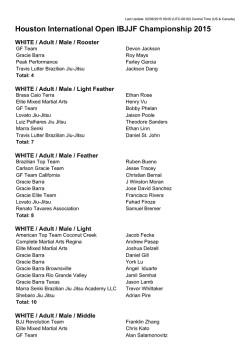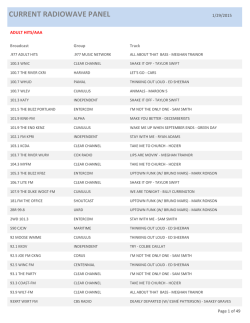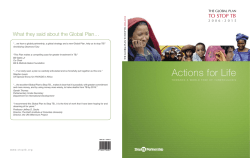
ICES Identification Leaflet for Diseases and Parasites of Fish and
ICES IDENTIFICATION LEAFLETS PARASITES OF FOR FISH DISEASES AND AND SHELLFISH Leaflet No. 62 Hyperpigmentation of common dab (Limanda limanda L.) Thomas Lang, Stephen W. Feist, Patricia A. Noguera, and David Bruno International Council for the Exploration of the Sea Conseil International pour l’Exploration de la Mer H.C. Andersens Boulevard 44–46 DK-1553 Copenhagen V Denmark Telephone (+45) 33 38 67 00 Telefax (+45) 33 93 42 15 www.ices.dk [email protected] Recommended format for purposes of citation: Lang, T., Feist, S. W., Noguera, P. A. and Bruno, D. W. 2015. Hyperpigmentation of common dab (Limanda limanda L.). ICES Identification Leaflets for Diseases and Parasites of Fish and Shellfish. 5 pp. Series Editor: Stephen Feist. Prepared under the auspices of the ICES Working Group on Pathology and Diseases of Marine Organisms. The material in this report may be reused for non-commercial purposes using the recommended citation. ICES may only grant usage rights of information, data, images, graphs, etc. of which it has ownership. For other third-party material cited in this report, you must contact the original copyright holder for permission. For citation of datasets or use of data to be included in other databases, please refer to the latest ICES data policy on the ICES website. All extracts must be acknowledged. For other reproduction requests please contact the General Secretary. ISBN 978-87-7482-159-5 ISSN 0109–2510 © 2015 International Council for the Exploration of the Sea Leaflet No. 62 | 1 Hyperpigmentation of common dab (Limanda limanda L.) Thomas Lang, Stephen W. Feist, Patricia A. Noguera, and David W. Bruno Susceptible species Hyperpigmentation primarily affects common dab (Limanda limanda L.) from the North Sea and, less frequently, from adjacent waters such as the English Channel, the Celtic Sea and the Irish Sea. Hyperpigmentation has been recorded in dab since the onset of systematic fish disease surveys in the North Sea in the 1980s and has also been observed occasionally in other flatfish species from the same habitat, such as long rough dab (Hippoglossoides platessoides), lemon sole (Microstomus kitt), solenette (Buglossidium luteum) and European flounder (Platichthys flesus), but at apparently lower prevalence (Grütjen et al., 2013). Disease name The term “hyperpigmentation” reflects the major macroscopic signs of the condition which consist of an increase in green to black or pearly-white pigmentation that can either be patchy or can affect large parts of the body surface. Aetiological agent Although virological, bacteriological, parasitological, histopathological and ultrastructural studies have been carried out (Noguera et al., 2013), no aetiological agents were identified and reasons for the condition and its characteristic spatial patterns and temporal trends in the North Sea have not been resolved. It is believed that environmental factors are the causes of hyperpigmentation and several hypotheses as to the main aetiological factors have been discussed (Grütjen et al., 2013; Noguera et al., 2013). Geographical distribution Hyperpigmentation is especially common in the North Sea dab stock, with highest maximum prevalences (approximately 50%) recorded in the German Bight, at the Dogger Bank and off the Scottish coast in the period 2005–2009. The prevalence in northern regions of the central North Sea has always been lower and generally does not exceed 10%. A conspicuous and statistically significant, often almost linear, increase in prevalence was recorded in many North Sea regions since the 1980s. The condition has occurred less frequently in dab from the English Channel, The Celtic Sea and Irish Sea. Interestingly, hyperpigmentation is virtually absent in dab stocks from the Baltic Sea and Icelandic waters (Grütjen et al., 2013). Associated environmental conditions From the long-term prevalence data available over a period of 30 years and from the lack of findings of any pathogen involvement, there is indication that the increase in prevalence of hyperpigmentation has a strong environmental link. Causes discussed include, e.g. an increased UV-B radiation affecting pelagic early life stages, changes in food composition associated with climate change and effects of contaminants Hyperpigmentation of common dab (Limanda limanda L.) 2 | (Grütjen et al., 2013; Noguera et al., 2013). However, no conclusive evidence on the role of these factors exists to date. Significance Hyperpigmentation is considered as a disease because it could be demonstrated that it has an impact on the fitness of dab. Particularly specimens with a severe colour change have significantly lower condition factors and show a greater mortality if kept in captivity than their non-affected conspecifics (Grütjen et al., 2013). Therefore, it cannot be excluded that hyperpigmentation exert population-level effects, particularly if it occurs at high prevalence. Gross clinical signs Hyperpigmentation is characterized by the occurrence of spots or diffuse patches of green to black pigment on the ocular side and, occasionally, pearly-white spots on the blind ventral side (Figure 1). Rarely, the ventral side is also affected by green to black spots (Figure 1). Histopathological findings in affected fish include hyperplasia of chromatophores (melanophores and iridophores) in the dermis (Figure 2). In highly pigmented dab, dermal lymphocytic infiltration, occasionally expanding into the epidermis and sub-dermal layer (Figure 2), was more frequent than in normal fish, suggesting an active immune response. Ultrastructure studies showed additional disruption of the epithelial layer, with loose melanin granules between cells and a number of single or aggregated melanocytes. Control measures and legislation Marketability of hyperpigmented specimens may be affected by EU Regulations No. 178/2002 (Article 14) on procedures in matters of food safety (EU, 2002), as hyperpigmented specimens may be regarded as “unfit for human consumption” based on sensory (visual) inspection. Diagnostic methods Diagnosis of hyperpigmentation can be done by macroscopic examination. It is recommended to use a grading system with three severity stages, based on the body area covered by the pigment anomaly, as defined by the Biological Effects Quality Assurance in Monitoring (BEQUALM programme (www.bequalm.org). Macroscopic examination can be supported by histopathology (H&E stain of the epidermis, dermis and underlying musculature) and ultrastructural studies as described by Noguera et al. (2013). Key References EU. 2002. Regulation No 178/2002 laying down the general principles and requirements of food law, establishing the European Food Safety Authority and laying down procedures in matters of food safety. Official Journal of the European Union, L 379, 31 pp. Grütjen, F., Lang, T., Feist, S. W., Bruno, D. W., Noguera, P. A., Wosniok, W. 2013. Hyperpigmentation in North Sea dab Limanda limanda: spatial and temporal patterns and host effects. Diseases of Aquatic Organisms, 103(1): 9–24. Noguera, P. A., Feist, S. W., Bateman, K. S., Lang, T., Grütjen, F., Bruno, D. W. 2013. Hyperpigmentation in North Sea dab (Limanda limanda): macroscopic and Leaflet No. 62 | 3 microscopic characteristics and pathogen screening. Diseases of Aquatic Organisms, 103(1): 25–34. A B Figure 1. Limanda limanda. Severe hyperpigmentation (grade 3) on the upper (A) and lower (B) body. Hyperpigmentation of common dab (Limanda limanda L.) 4 | A * C * B * Figure 2. Limanda limanda. Histological appearance of hyperpigmentation. A: skin of normal pigmented dab. B and C: skin of hyperpigmented fish showing characteristic dermal hyperplasia of chromatophores (arrows). Note also mild epidermal disruption (B and C; asterisks) and subdermal infiltration (C; arrowheads). Leaflet No. 62 | 5 A utho r C o nta ct I nfo r ma ti o n Thomas Lang Stephen W. Feist Thünen Institute of Fisheries Ecology Deichstr. 12 27472 Cuxhaven Germany [email protected] Cefas Weymouth Laboratory Barrack Road Weymouth DT4 8UB UK [email protected] Patricia A. Noguera Marine Scotland Science 375 Victoria Road Aberdeen AB11 9DB UK [email protected] David W. Bruno Marine Scotland Science 375 Victoria Road Aberdeen AB11 9DB UK [email protected]
© Copyright 2025

